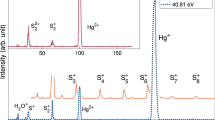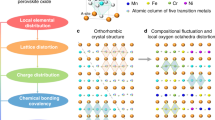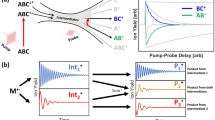Abstract
IN a series of preliminary investigations on the excitation of spectra by the high-frequency discharge, several interesting phenomena connected with intensity distribution have been observed, some of which have already been reported1. Further work indicates that these consist essentially in a redistribution of intensity among different band-systems of a diatomic molecule (that is, among different electronic energy levels) or among atomic energy states of different multiplicities. Thus the mercury spectrum observed shows that under certain well-defined and reproducible conditions, as for example pressure of gas, frequency of exciting oscillations, etc., only those lines are present which involve triplet initial states. Similarly, again under definite conditions, mainly those band systems of carbon monoxide are excited which involve only the singlet levels.
This is a preview of subscription content, access via your institution
Access options
Subscribe to this journal
Receive 51 print issues and online access
$199.00 per year
only $3.90 per issue
Buy this article
- Purchase on SpringerLink
- Instant access to full article PDF
Prices may be subject to local taxes which are calculated during checkout
Similar content being viewed by others
References
Asundi, Singh and Singh, Proc. Ind. Sci. Cong., Part 3, 35 (1942). Asundi, Singh, and Pant . Proc. Ind. Sci. Cong., Part 3, 35 (1942).
Langstroth, Proc. Roy. Soc. A., 146, 177 (1934) also 150, 371 (1935). Hermann, Ann. Phys., 25/2, 166 (1936).
Johnson, Phil. Mag., 48, 1069 (1924).
Fowler and Strutt, Proc. Roy. Soc., A, 85, 377 (1911).
Author information
Authors and Affiliations
Rights and permissions
About this article
Cite this article
ASUNDI, R., SINGH, N. Selective Excitation of Spectra by the High-Frequency Discharge. Nature 150, 123 (1942). https://doi.org/10.1038/150123a0
Issue date:
DOI: https://doi.org/10.1038/150123a0
This article is cited by
-
Intensity variations in the first positive and second positive bands of nitrogen excited by high frequency oscillations
Proceedings of the Indian Academy of Sciences - Section A (1945)



